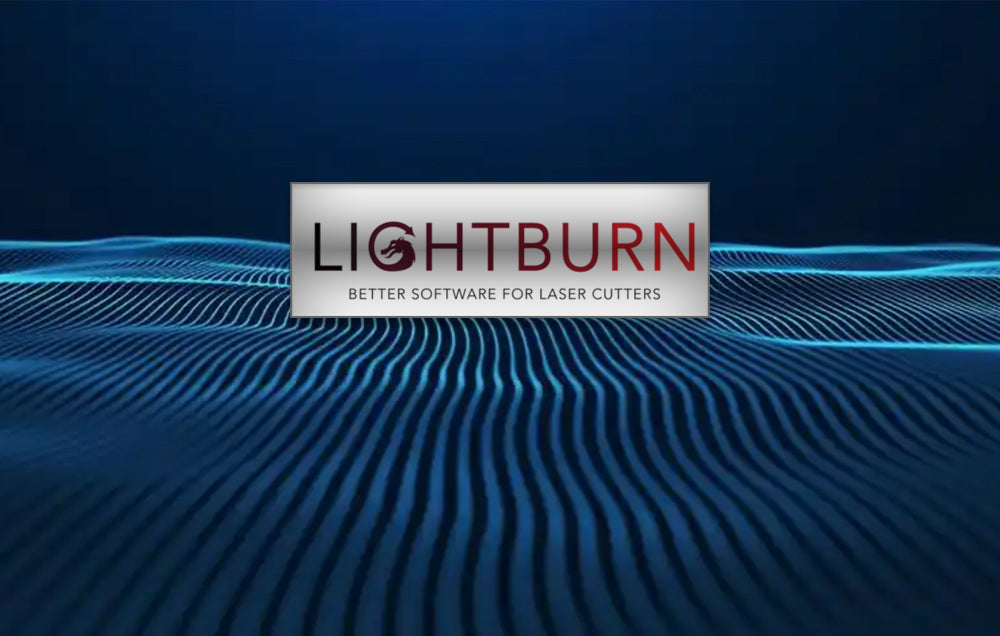
How to Optimize Ortur Laser Engraver Output with LightBurn?
Share
From Photo to Engraving: How to Optimize Ortur Laser Engraver Output with LightBurn?
Turning a cherished photo into a tangible laser engraving is a beautiful way to preserve memories—but achieving that crisp, detailed result requires the right tools and techniques. When paired with Ortur laser engravers, LightBurn software becomes a powerful ally, unlocking precision and creativity that elevate your projects from good to exceptional. In this guide, we’ll walk through how to use LightBurn to optimize every step of the process, ensuring your Ortur engraver delivers stunning, high-fidelity Photo engravings.
Why Ortur + LightBurn? A Match Made for Precision
Ortur laser engravers are renowned for their reliability, pinpoint accuracy (down to 0.01mm), and consistent performance—qualities that make them ideal for detailed work like photo engravings. LightBurn, a user-friendly yet robust laser control software, complements Ortur’s hardware perfectly: it simplifies image editing, offers granular control over engraving parameters, and seamlessly integrates with Ortur machines. Together, they bridge the gap between digital images and physical art, making professional-grade results accessible to hobbyists and pros alike.
Step 1: Gather Your Tools & Prep Your Photo
Before diving into LightBurn, ensure you have everything you need:
Ortur Laser Engraver: Choose a model like the Ortur Laser Master 3 or Ortur Neo, both engineered for high-detail work. Ensure the laser head is clean, and the workspace is stable (vibrations can compromise precision).
LightBurn Software: Download the latest version (compatible with Ortur machines—check www.orturlaser.com for setup guides).
High-Quality Photo: Select a sharp, well-lit portrait with clear contrast. Avoid blurry or low-resolution images—details like facial contours, hair texture, and eye depth rely on image clarity.
Engraving Material: Wood, acrylic, leather, or metal (check Ortur’s material compatibility guide on Ortur Official Website for best results).
Step 2: Preprocess Your Photo in LightBurn
LightBurn isn’t just for sending jobs to your engraver—it’s a powerful tool for refining your photo to maximize engraving quality. Follow these steps:
Resize & Crop
Load your photo into LightBurn (File > Import). Use the “Scale” tool to match your material size (e.g., 15x20cm for a wooden plaque). Crop out unnecessary background to focus on the subject—this reduces engraving time and keeps details sharp.
Adjust Contrast & Brightness
Photo engravings thrive on clear light/dark contrasts. In LightBurn:
Go to “Image” > “Adjust Image.”
Boost contrast (try 10-20%) to make edges (like jawlines or eyelashes) stand out.
Tweak brightness to avoid washing out highlights or losing shadow details.
Convert to Grayscale
Ortur lasers interpret grayscale values as varying power levels (darker = more power, deeper engraving). Convert your photo:
Click “Image” > “Convert to Grayscale.”
Use the “Gamma” slider to fine-tune tonal range—lower gamma (0.8-1.2) enhances midtones, great for facial features.
Step 3: Master LightBurn’s Engraving Settings for Ortur
The key to stunning results lies in dialing in the right parameters. LightBurn’s intuitive interface makes this easy—here’s what to focus on:
Choose the Right Mode
For photos, use “Bitmap Mode” (LightBurn’s default for grayscale images). This tells your Ortur engraver to map grayscale values to laser power, creating smooth gradients.
Set Power & Speed
Ortur’s precision lets you adjust power (0-100%) and speed (100-3000mm/min) for every detail. General guidelines:
Wood (e.g., birch): 30-50% power, 800-1200mm/min speed. Lower power preserves fine details (eyebrows), higher power deepens shadows (hair).
Acrylic: 20-40% power, 1500-2000mm/min speed (avoids melting edges).
Leather: 15-30% power, 500-800mm/min speed (gentler to retain texture).
Pro tip: Use LightBurn’s “Material Test” feature to run small sample engravings and tweak parameters before your final project.
Enable Air Assist (If Equipped)
Many Ortur models support air assist—toggle it on in LightBurn’s “Device Settings.” It blows away debris, preventing charring on wood or smudging on acrylic, keeping details crisp.
Step 4: Preview & Engrave with Confidence
Before hitting “Start,” use LightBurn’s “Preview” tool to simulate the engraving. Check for:
Missing details (zoom in on eyes or lips).
Overlapping edges (adjust image position if needed).
Once satisfied, secure your material to the Ortur bed (use clamps or tape to prevent shifting), then click “Start” in LightBurn. Ortur’s stable motion system ensures consistent tracking, while LightBurn’s real-time progress bar keeps you informed.
Step 5: Post-Processing to Elevate Results
After engraving:
Brush away debris with a soft cloth (for wood) or compressed air (for acrylic).
For wood, apply a clear sealant to enhance contrast and protect the surface.
For leather, condition with oil to bring out texture.
Why Ortur + LightBurn Deliver Unbeatable Results
Ortur’s engineering—from high-precision stepper motors to laser modules with stable power output—works in harmony with LightBurn’s advanced features. Whether you’re a beginner or a pro, this combo lets you:
Capture micro-details (like laugh lines or individual strands of hair).
Achieve smooth gradients that mimic photo depth.
Save time with LightBurn’s presets optimized for Ortur machines.
Ready to turn your photos into timeless engravings? Explore Ortur’s full range of laser engravers and find LightBurn setup guides on www.orturlaser.com. With Ortur and LightBurn, every memory can become a masterpiece.



